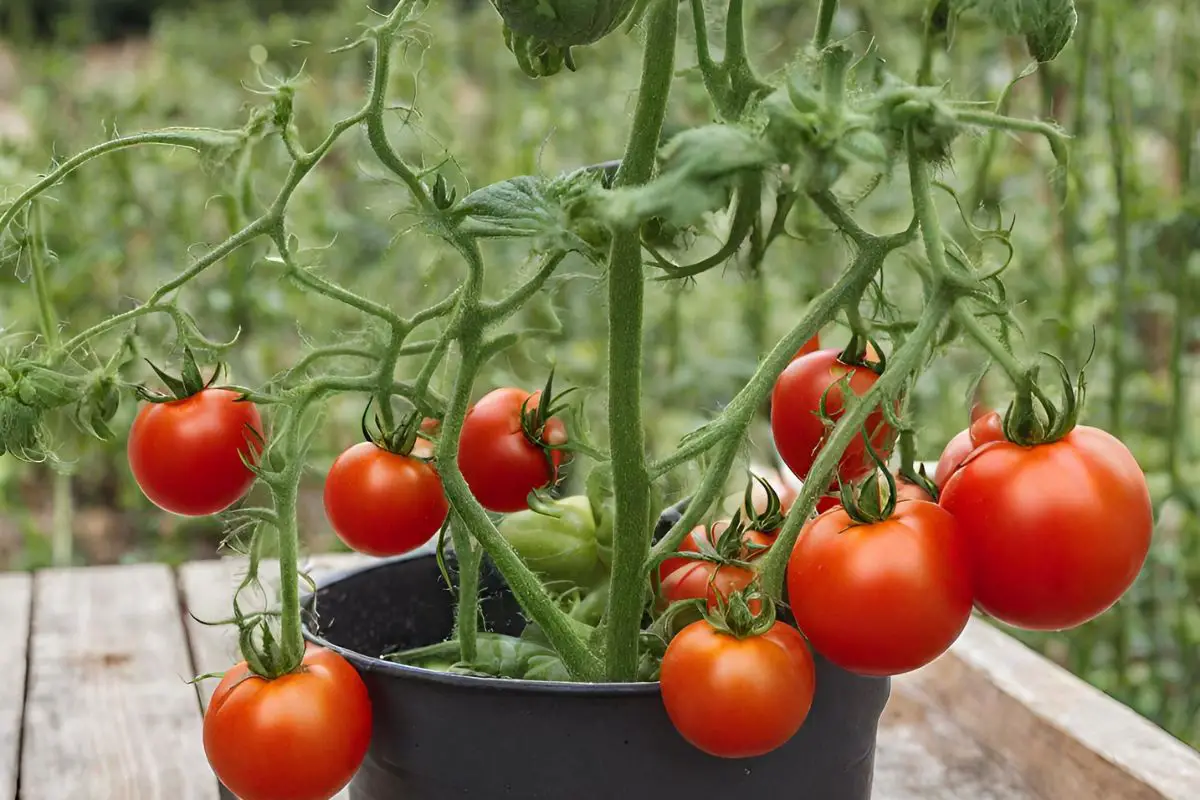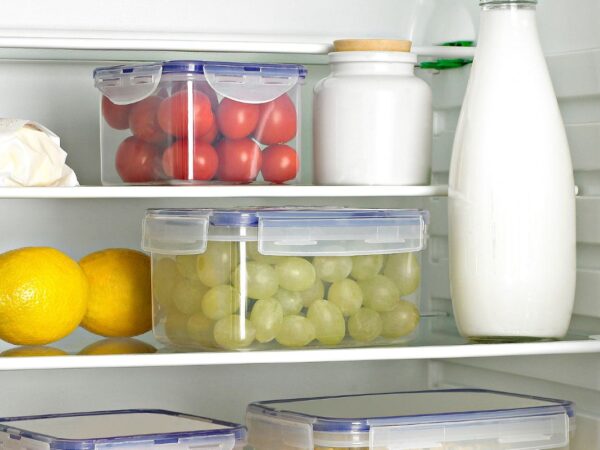Can you overwater tomatoes? This is a crucial question for every gardener aiming to cultivate healthy and fruitful tomato plants. Overwatering is a common issue that can lead to several problems, affecting the plant's growth and yield. In this article, we'll explore the signs of overwatering, the consequences it has on tomato plants, and the best practices to maintain optimal watering levels. By understanding the balance between too much and too little water, you can ensure your tomato plants thrive and produce an abundant harvest. Let's delve into the world of tomato care and water management.
Understanding the detrimental effects of excess moisture, such as blossom end rot, is crucial if you want to ensure healthy and thriving tomato plants in your garden soil. Implementing drip irrigation can help regulate water levels and prevent these issues. We will explore the potential causes of excess moisture, discuss how it affects garden soil and waters tomatoes at different stages of growth, and provide expert tips on finding the right balance to prevent blossom end rot. So if you've ever wondered about excess moisture and whether you can overwater tomatoes or are looking for ways to optimize your watering routine and use waters efficiently in your garden beds, look no further! Join us as we uncover the dos and don'ts of watering tomatoes in garden beds for optimal growth and yield. Proper watering is essential for maintaining root health and maximizing the benefits of fertilizer.
Recognizing Overwatered Tomato Plants
Symptoms of Excess Water
Overwatering your tomato plants can lead to decreased health and productivity in your garden. This is because excess water can create an environment that promotes the growth of fungus and blight, which can harm your plants. Using the right amount of fertilizer is important for maintaining the health and productivity of your tomato plants. It's important to be able to recognize the signs of overwatering in your garden, such as yellowing tomato leaves, so that you can take corrective action. This may involve adjusting your watering schedule or using a fertilizer to prevent fungus growth. Here are some common symptoms to look out for:
Drooping Leaves
One of the most noticeable signs of overwatered tomatoes in the garden is drooping leaves. This can be easily prevented by following a proper watering schedule and using a watering can. Additionally, using fertilizer can help maintain the health of the plants. When watering a garden, it is important to avoid overwatering as this can cause the roots of the plants to become saturated. This can make it difficult for the roots to absorb oxygen and can negatively affect the health of the plants. It is essential to have a proper watering schedule and use a watering can to ensure that the plants receive the right amount of water. Additionally, it is important to be mindful of the leaves of tomato plants, as they can be sensitive to excessive water. As a result, the garden's tomato plants may wilt and appear limp without proper watering. Using a watering can to water the plants is essential for their health. If you notice your garden's tomato plant's foliage looking sad and droopy, it could be a clear indication of overwatering in the garden.
Discoloration
Another telltale sign of overwatered tomatoes is leaf discoloration. When using a watering can in the garden, it is important to avoid over-watering. When the soil is constantly waterlogged, essential nutrients become diluted and leach away, leading to nutrient deficiencies in the plant. This can cause the leaves of tomato plants to turn yellow or pale green due to lack of water. If you observe such discoloration in your tomato plants, it might be time to reassess your watering routine.
Cracked Fruit
Overwatering can also lead to cracked fruit in tomatoes. Excessive water causes rapid expansion of tomato plants, resulting in cracks on their skin. This occurs because the excess water intake puts pressure on the fruit cells, causing them to burst open. So if you find cracks on your tomatoes' skin, chances are they have been receiving more water than they need.
Root Rot and Fungal Infections
Waterlogged soil creates an ideal environment for root rot and fungal infections in tomato plants. Excessive water can restrict oxygen availability for tomato plant roots and promote the growth of harmful pathogens like fungi. These conditions can severely damage or even kill your plants if left untreated. To prevent root rot and fungal infections, ensure proper drainage by using well-draining soil or containers with drainage holes.
Comparing Underwatered and Overwatered Tomatoes
Differentiating between underwatered and overwatered tomatoes can be challenging, as the symptoms may overlap. Underwatered plants typically have dry, brittle leaves that may curl or wilt. On the other hand, overwatered plants have drooping leaves with a more limp appearance. By closely observing your tomato plants' foliage and considering other signs like fruit cracking and leaf discoloration, you can determine whether they are suffering from excess water or insufficient hydration.
Recognizing the signs of overwatering is crucial for maintaining healthy tomato plants. By being attentive to drooping leaves, leaf discoloration, cracked fruit, and the risk of root rot and fungal infections, you can adjust your watering practices accordingly to ensure optimal growth and productivity for your tomatoes.
The Consequences of Overwatering Tomatoes
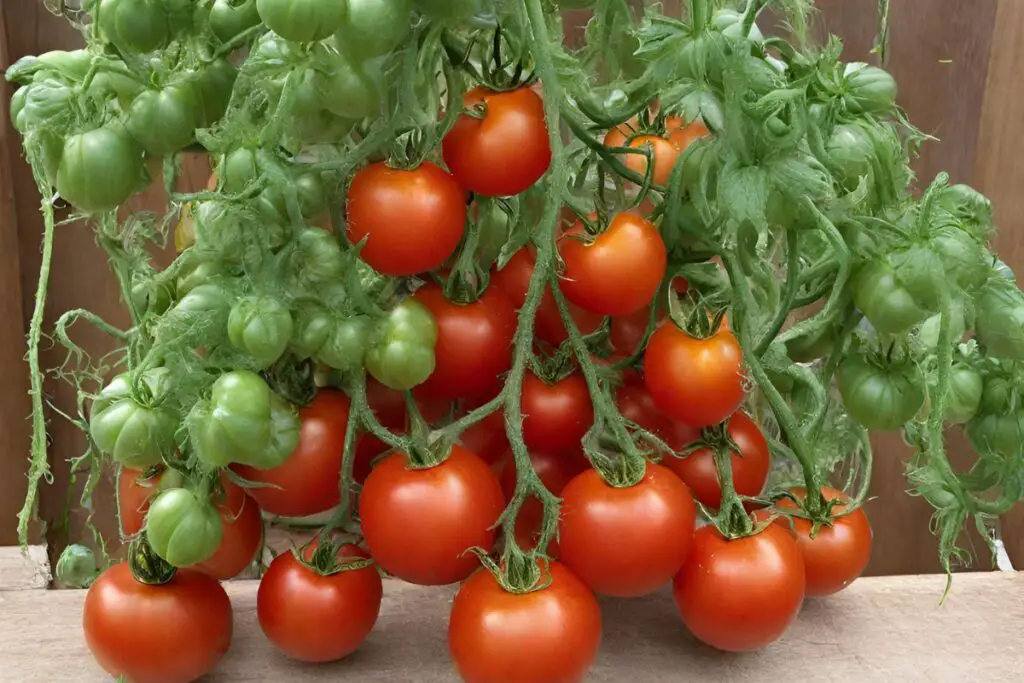
Impact on Plant Health
Overwatering tomatoes can have detrimental effects on the overall health of the plants. One common issue that arises from inconsistent watering, including overwatering or underwatering, is blossom end rot. This condition occurs when there is a calcium deficiency in the fruit due to irregular watering practices. Maintaining consistent moisture levels is crucial to prevent blossom end rot and ensure healthy tomato plants.
Another consequence of overwatering tomatoes is poor flavor. When tomatoes are overly watered, it can lead to diluted flavor profiles. Waterlogged soil affects the uptake of nutrients by the plant, ultimately impacting the taste quality of the tomatoes. To ensure better-tasting tomatoes, it is important to follow proper watering practices and avoid overwatering.
Risks of Waterlogged Soil
One significant risk associated with overwatering tomatoes is waterlogged soil. When soil becomes waterlogged, it deprives the roots of essential oxygen, leading to root suffocation. This lack of oxygen can result in stunted growth and overall decline in plant health. Proper soil drainage is crucial to prevent waterlogging and mitigate these risks.
To summarize, overwatering tomatoes can have negative consequences for their health and flavor profile. Blossom end rot caused by inconsistent watering practices can lead to calcium deficiencies in fruits, while waterlogged soil deprives roots of oxygen and hampers nutrient uptake. By maintaining consistent moisture levels and ensuring proper soil drainage, you can promote healthier tomato plants with better taste quality.
Inspecting and Treating Overwatered Tomato Roots
How to Inspect Plant Roots
To determine if your tomato plants have been overwatered, it's important to inspect their roots. Gently dig around the root zone and carefully assess the health of the roots. Look for any signs of rot, discoloration, or foul odor, as these are indications of damage caused by overwatering. Healthy roots should be firm, white in color, and free from decay.
Saving Overwatered Tomatoes
Providing Dry Soil
One crucial step is to provide them with dry soil. Allowing the soil to dry out between watering sessions is essential. This helps prevent further waterlogging and gives the roots a chance to recover. Adjust your watering frequency based on weather conditions and the specific needs of your tomato plants. Finding a balance in moisture levels promotes optimal growth.
Supplying Nutrients
Overwatering can lead to nutrient deficiencies in tomato plants since excessive water can leach nutrients from the soil. To save your overwatered tomatoes, it's important to regularly fertilize them. This replenishes the essential nutrients that may have been lost due to excessive watering. A balanced nutrition approach will support healthy development and help your tomatoes bounce back.
Ideal Watering Practices for Tomato Plants
Best Watering Techniques
To ensure healthy tomato plants, it's crucial to employ the best watering techniques. One of the most effective methods is to water your tomato plants in the morning. This allows for efficient absorption and gives the foliage ample time to dry before evening. By doing so, you reduce the risk of diseases that can thrive in moist conditions. Early irrigation helps your plants withstand the heat stress they may face during the day.
Another key practice is to focus your watering efforts on the roots rather than overhead. Directing water at the base of tomato plants ensures that it reaches their roots directly, promoting efficient hydration without excess moisture on leaves. This targeted approach minimizes foliar wetness, which is essential for preventing fungal diseases from taking hold.
Determining Water Quantity Needs
Understanding how much water your tomato plants need is vital to prevent overwatering or underwatering. The specific water requirements will vary based on the growth stage of your tomatoes. Adjusting daily water quantities accordingly will help maintain optimal hydration levels and promote healthy growth.
Regularly monitoring soil moisture levels is crucial in determining when and how much to water your tomato plants. By checking the soil regularly, you can gauge whether it's too dry or overly saturated and adjust accordingly. Remember that consistency is key; aim for a consistent level of moisture without letting the soil become overly soggy.
Watering Tomato Plants in Different Scenarios
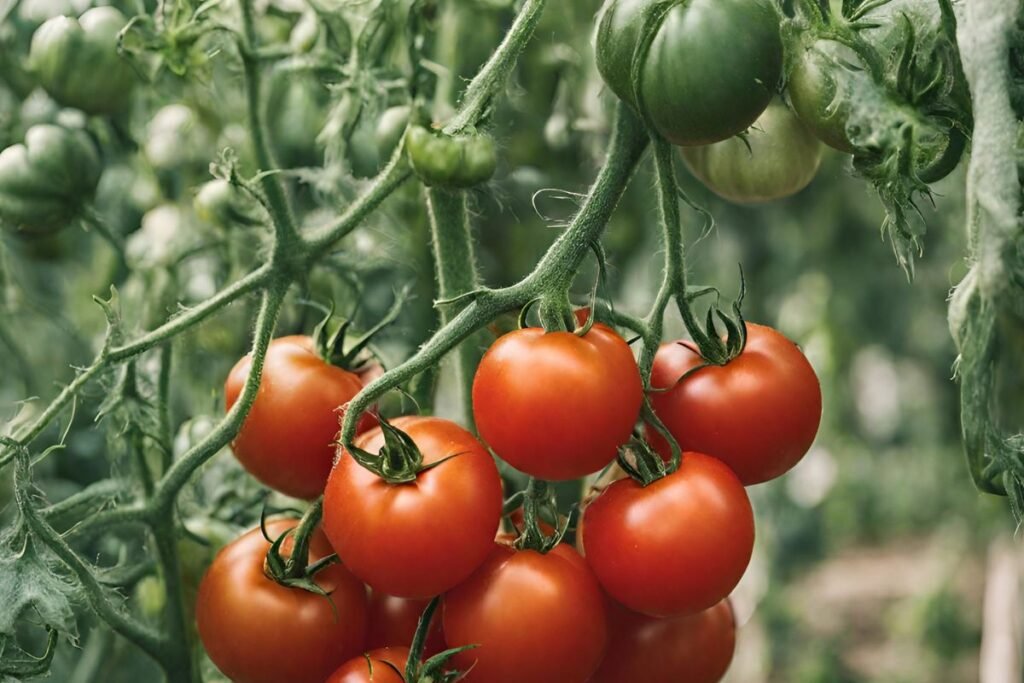
Watering Potted Tomato Plants
Potted tomato plants require special attention. Since they are confined to a limited soil volume, it's crucial to monitor their moisture levels carefully. To prevent overwatering, make sure your containers have proper drainage holes. These holes allow excess water to escape and prevent the roots from becoming waterlogged. The frequency of watering should be adjusted based on the size of the pot and environmental factors such as temperature and humidity.
Adjusting Water During Fruit Production
When your tomato plants start producing fruits, it's important to adjust your watering routine accordingly. This stage is critical for fruit set and development, so providing adequate hydration is essential. Increasing the water supply during this period helps support healthy fruit growth and prevents issues like cracking. However, it's crucial not to go overboard with watering during this time as well. Monitor the soil moisture regularly and avoid overwatering, which can lead to root rot or other problems.
During fruit production, tomatoes require a delicate balance of moisture in the soil. If you notice that the top inch of soil feels dry, it's a good indication that your plants need some water. On the other hand, if the soil feels consistently damp or saturated, hold off on watering until it dries out a bit.
To maintain optimal moisture levels for your tomato plants during fruit production, consider using mulch around the base of each plant. Mulching helps retain moisture in the soil while preventing excessive evaporation under hot weather conditions.
Remember that every garden is unique, so it might take some trial and error to find the perfect watering routine for your tomato plants. Pay close attention to how they respond to different amounts of water and adjust accordingly.
Preventative Measures to Avoid Overwatering
Tips to Prevent Excess Watering
Watering tomatoes is essential for their growth and health, but overwatering can have detrimental effects. To avoid this issue, here are some preventative measures you can take:
Reduce Watering as Fruit Begins
As your tomatoes begin to ripen, it's crucial to decrease the frequency of watering. This step allows the fruit to concentrate its flavors and reduces the risk of splitting.
When tomatoes are close to reaching maturity, they require less water intake. By reducing watering during this stage, you strike a balance between hydration and fruit maturation, resulting in optimal flavor and texture.
Utilize Proper Drainage Solutions
Improving soil drainage is another effective way to prevent overwatering issues. Incorporating organic matter into the soil or creating raised beds enhances drainage capabilities.
For container gardening, consider installing drainage systems or using permeable materials such as gravel or perlite in your pots. These solutions allow excess water to drain away easily, preventing waterlogged roots that can lead to overwatered plants.
Proper drainage not only helps prevent overwatering but also ensures that the root system receives adequate oxygen for healthy growth.
By implementing these preventative measures, you can safeguard your tomato plants from the perils of overwatering. Remember that finding the right balance between hydration and fruit maturation is key for achieving delicious results.
Advanced Tips for Tomato Plant Care
In order to successfully care for your tomato plants, it's important to monitor their growth stages and adjust your watering practices accordingly. Observing the different stages of plant growth will help you determine the amount of water they need at each phase. Young seedlings, for example, require more frequent watering compared to established plants.
Keep a close eye on your tomato plants as they develop. As seedlings, they are delicate and have shallow root systems that can dry out quickly. This means you'll need to water them more frequently to ensure they stay adequately hydrated. As the plants mature and their root systems grow deeper into the soil, they become more resilient and require less frequent watering.
Tailoring irrigation based on the specific needs of each growth stage is crucial. During the early stages of growth, focus on providing consistent moisture while avoiding overwatering. Over time, as the plants establish themselves and start producing fruits, you can gradually reduce the frequency of watering while ensuring they still receive enough water to support fruit development.
Another factor to consider when caring for your tomato plants is climate variations. The amount of water your tomatoes need will depend on the regional climate conditions in which they are grown. In hotter climates, where evaporation rates are higher and temperatures can be scorching, you may need to water your tomato plants more frequently to prevent them from drying out.
Conversely, in cooler climates with lower evaporation rates and milder temperatures, you won't need to water your tomatoes as often. It's important to take into account local weather patterns when determining appropriate irrigation schedules for your tomato plants.
By adapting your watering routines according to climate variations, you can provide optimal conditions for healthy tomato plant growth. Remember that tomatoes prefer consistent moisture levels rather than extreme fluctuations between wet and dry soil.
To summarize:
-
Observe plant growth stages closely and adjust watering practices accordingly.
-
Young seedlings require more frequent watering than established plants.
-
Tailor irrigation based on the specific needs of each growth stage.
-
Adapt watering routines according to regional climate conditions.
-
Hotter climates may necessitate more frequent watering, while cooler climates require less.
By following these advanced tips for tomato plant care, you'll be well-equipped to provide your plants with the right amount of water at each stage of their growth. Remember, it's all about finding the balance between keeping them hydrated without overwatering. Happy gardening!
Frequently Asked Questions About Watering Tomatoes
How Often to Water Tomato Plants
Determining the ideal watering frequency for tomato plants is crucial for their overall health and productivity. Several factors come into play when deciding how often to water, including soil type, weather conditions, and the size of the plant itself. It's essential to strike a balance between providing enough moisture for the tomatoes without overwatering them.
To determine the watering frequency, consider the following factors:
-
Soil type: Different soil types retain water differently. Sandy soils drain quickly and may require more frequent watering, while clay soils hold onto moisture longer.
-
Weather conditions: Hot and dry climates may necessitate more frequent watering than cooler and humid environments.
-
Plant size: Larger tomato plants with well-established root systems generally require more water than smaller seedlings.
It's vital to focus on deep root hydration rather than surface wetting. Shallow watering can lead to weak root development and make the plants more susceptible to drought stress. To ensure deep hydration, apply enough water that penetrates several inches into the soil.
Regularly assessing soil moisture levels is crucial before deciding whether or not to water your tomato plants. Stick your finger into the soil up to your knuckle; if it feels dry at that depth, it's time to water. However, if it still feels moist, you can hold off on watering for a little longer.
Signs of Adequate Hydration in Tomatoes
Proper hydration is essential for healthy tomato plants and abundant fruit production. Here are some signs that indicate your tomatoes are adequately hydrated:
-
Firm and plump fruits: Well-hydrated tomatoes will have firm flesh and plump fruits without any signs of wilting or shriveling.
-
Vigorous foliage growth: Properly hydrated tomato plants exhibit lush green foliage with no yellowing or drooping leaves.
-
Healthy root development: Adequate watering promotes robust root growth, which is crucial for nutrient uptake and overall plant health.
Observing these signs can help you gauge whether your tomato plants are receiving sufficient water. However, it's important to strike a balance and avoid overwatering, as excessive moisture can lead to issues such as root rot and fungal diseases.
Remember that each tomato plant is unique, so it's essential to monitor them closely and adjust your watering routine accordingly. Pay attention to the specific needs of your plants and make adjustments based on their response. By providing adequate hydration without overwatering, you'll promote healthy growth and maximize the yield of delicious tomatoes from your garden.
Conclusion
Congratulations! You are now equipped with the knowledge to properly water your tomato plants and avoid overwatering. By recognizing the signs of overwatering, understanding the consequences, and implementing ideal watering practices, you can ensure the health and productivity of your tomato plants. Remember to inspect and treat overwatered roots, and consider different watering scenarios such as container gardening or rainy weather.
To prevent overwatering in the future, follow the preventative measures outlined in this article. By providing your tomato plants with just the right amount of water, you will promote strong root development and vibrant growth. Don't forget to refer back to this article whenever you have questions or need a refresher on watering tomatoes.
Now go forth and become a master at watering tomatoes! Your plants will thank you with bountiful harvests. Happy gardening!
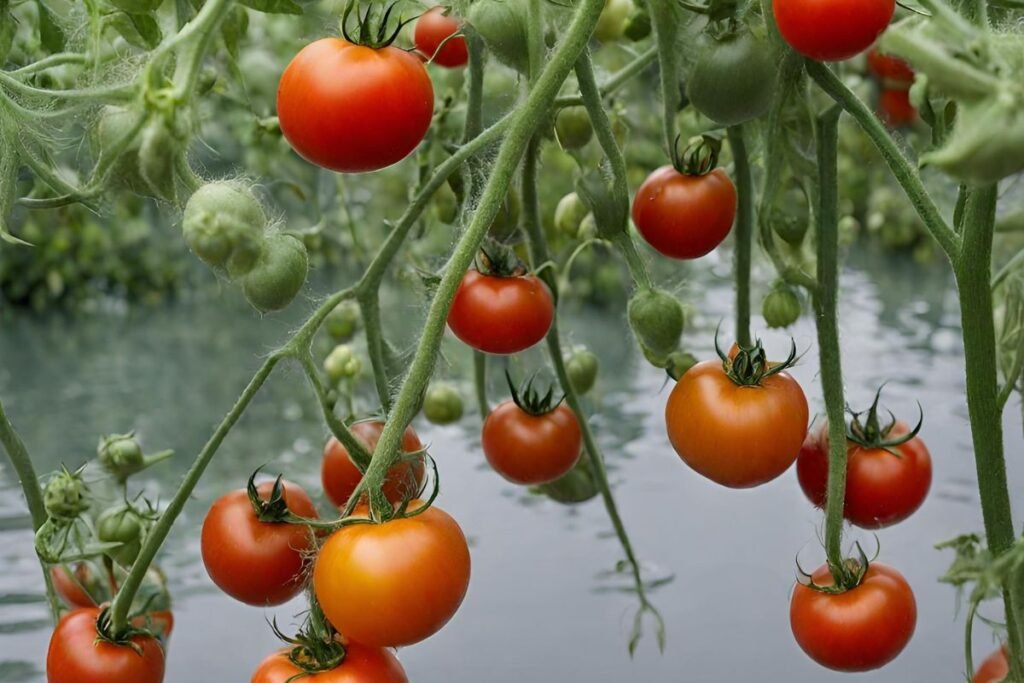
FAQs
Can you overwater tomatoes?
Yes, it is possible to overwater tomatoes. Overwatering can lead to root rot and other diseases that can harm the plant's health and productivity. It is important to maintain a balance and only water tomatoes when the top inch of soil feels dry.
How often should I water my tomato plants?
Tomato plants generally require about 1-1.5 inches of water per week. However, this may vary depending on factors such as weather conditions, soil type, and stage of growth. It is best to check the soil moisture regularly and water when the top inch feels dry.
What are the signs of overwatering tomatoes?
Overwatered tomato plants may display yellowing leaves, wilting despite moist soil, or stunted growth. The roots may also appear mushy or have a foul odor due to root rot caused by excessive moisture. Proper drainage and allowing the soil to partially dry out between watering can prevent these issues.
How do I know if my tomato plants need watering?
To determine if your tomato plants need watering, insert your finger into the soil up to the first knuckle. If it feels dry at this depth, it's time to water them. Observing slight wilting in the morning (before full sun exposure) can be an indication that they need hydration.
Should I water my tomato plants from above or below?
It is generally recommended to water tomato plants at ground level rather than from above. Watering at ground level allows for direct absorption by the roots while minimizing moisture on leaves which could potentially promote disease development. Drip irrigation or soaker hoses are effective methods for watering tomatoes.
Image Source: Paid image from CANVA

